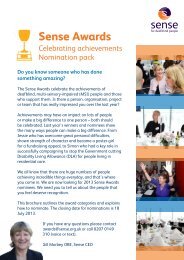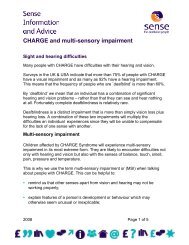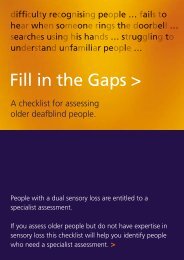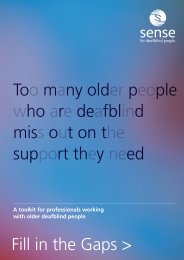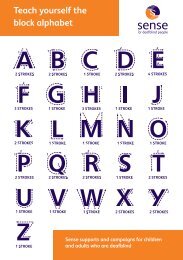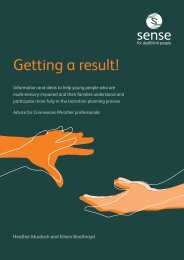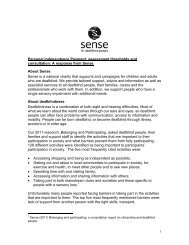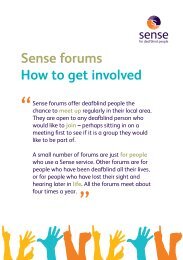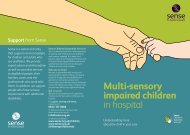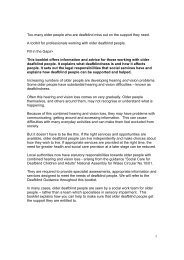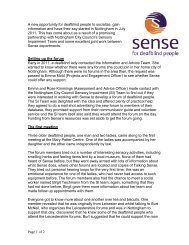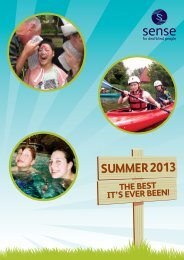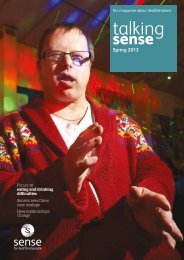MSI Unit Curriculum - Sense
MSI Unit Curriculum - Sense
MSI Unit Curriculum - Sense
You also want an ePaper? Increase the reach of your titles
YUMPU automatically turns print PDFs into web optimized ePapers that Google loves.
<strong>MSI</strong> <strong>Unit</strong> <strong>Curriculum</strong>: Phase 2Pupils’ current learning strengths and preferences are used to support thedevelopment of new concepts.Staff model ways of combining objects (for example, dropping balls into abox), encouraging pupils to attend to the activity but not to join in until theyare happy to do so. Any combination of objects by pupils is encouraged, andopportunities given to repeat the activity using the same and similar equipment.Teaching sessions incorporate different processes and materials, and changes inmaterials (for example, when water is added to cornflour). Some pupils may needto observe sessions (through sight, hearing and/or proximity) for a considerabletime before they are confident about participating. Pupils’ engagement withmaterials may remain extremely brief; their likes and dislikes are respected,although staff take care that their decisions are informed, not immediaterejections of new activities.Whenever possible, teaching is through activities which are directly usefuland transferable from school to home or a future adult setting – for example,watching meal preparation; finding their own spoon; helping to wash up.Sensory responsesIn familiar, quiet environments, pupils can discriminate motivating familiarstimuli from others and identify meaning using their residual sight, hearingand/or other senses.They may only be able to use one sense at a time. In less ideal environments,for example, those where lighting causes glare or there are high levels ofbackground noise, pupils may rapidly become distressed or passive.Ongoing assessment of sensory function continues. Pupils’ preferred form ofsensory input is assessed in a range of settings. Optimal visual and acousticenvironments are maintained, with staff monitoring those visual or acousticintrusions which distract individual pupils.The resources and materials used with pupils are chosen to be accessible throughtheir residual senses. Items for exploration are presented so that pupils can revisitthem easily (for example, anchoring objects on a table or wheelchair tray).Staff watch for and act on indications that pupils are ready to develop theirsensory function further. This may involve, for example, drawing a pupil’sattention to items or events just beyond arms’ reach; providing informationthrough two sensory channels rather than just one, or encouraging jointattention by working with equipment held close to the adult’s face.45



